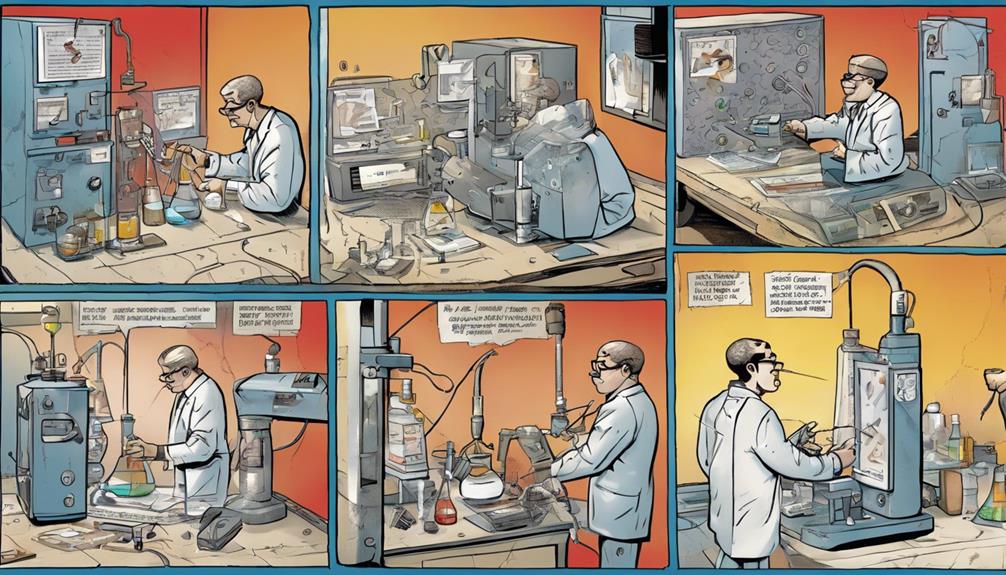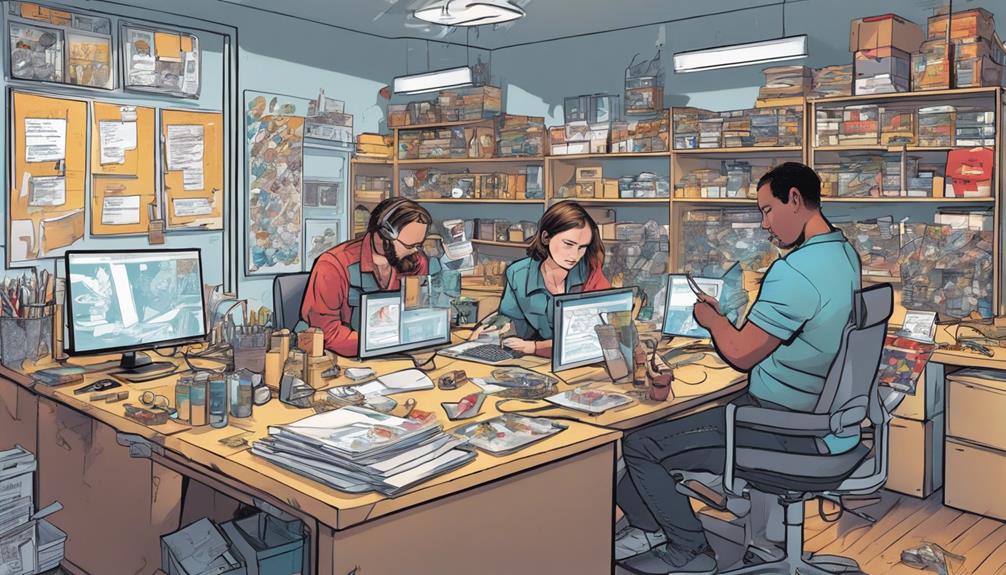Boosting customer satisfaction starts with effective package testing. You need to guarantee your products maintain integrity during transit, which prevents damage and costly returns. By implementing rigorous testing, you'll demonstrate your commitment to quality and reliability, strengthening your brand image and customer trust. Utilize methods like physical, environmental, and functional testing to assess your packaging thoroughly. Don't forget to seek customer feedback to continuously improve your strategies. As you refine your approach, you'll see customer loyalty grow. Stick around to discover how advanced technologies can further enhance your packaging processes and elevate your customer experience.
Key Takeaways
- Implementing rigorous package testing minimizes damage during transit, ensuring products arrive safely and enhancing customer satisfaction.
- Consistent quality through effective package testing fosters customer loyalty, as clients feel secure in their purchasing decisions.
- Utilizing advanced technologies in testing improves accuracy and efficiency, leading to better product delivery experiences for customers.
- Regularly updating packaging based on customer feedback demonstrates a commitment to their needs, boosting brand trust and satisfaction.
Importance of Package Testing
Package testing is vital for guaranteeing that your products remain intact and undamaged during transit, ultimately protecting your brand's reputation and customer satisfaction.
When you invest in package testing, you're taking proactive steps to evaluate the performance, durability, and safety of your packaging. This process minimizes the risk of product damage during delivery, which can lead to costly returns and a tarnished brand image.
By thoroughly reviewing your packaging, you guarantee that it meets the demands of real-world conditions, thereby maintaining product integrity.
Additionally, effective package testing helps you comply with regulatory requirements, reducing potential liabilities.
In short, prioritizing package testing is critical for building trust with your customers and enhancing their overall experience with your brand.
Benefits of Effective Package Testing

Effective package testing boosts your product's durability and safety, ensuring it arrives in perfect condition while enhancing customer satisfaction.
When you invest in effective testing, you minimize the risk of damage during transit, protecting your bottom line and reducing return costs.
Customers appreciate receiving items as expected, which fosters loyalty and encourages repeat purchases.
Additionally, robust package testing strengthens your brand image, showcasing your commitment to quality.
By adhering to safety and regulatory standards, you also mitigate risks associated with compliance and potential liabilities.
As a result, effective package testing not only safeguards your products but also elevates your overall customer experience, making your brand more trustworthy and reliable in the eyes of consumers.
Types of Package Testing

Understanding the various types of package testing is key to ensuring your products withstand the rigors of transportation and storage while maintaining their integrity.
You'll want to contemplate physical testing, which assesses durability and strength against handling and transport stresses.
Compatibility testing evaluates how your product interacts with its packaging, ensuring stability.
Environmental testing examines performance under different conditions, like temperature and humidity extremes.
Labeling compliance testing checks that your packaging meets legal requirements, while functional testing verifies the usability and effectiveness of the design.
Key Steps in Package Testing

Establishing clear testing objectives and success criteria is essential for a successful package testing process. Start by defining what you want to achieve, whether it's durability, safety, or compliance.
Next, select appropriate testing methods and equipment tailored to your objectives. Conduct controlled experiments that simulate real-world conditions to gather relevant data.
As you gather information, analyze it carefully to assess how well your packaging performs.
Finally, interpret the results to identify weaknesses and areas for improvement, guiding your design decisions.
Pro Tips for Package Testing

To enhance the effectiveness of your package testing, develop a thorough strategy that aligns with your business goals.
Focus on implementing quality control processes and maintain detailed documentation throughout the testing phases.
Train your staff on testing protocols to guarantee consistency and accuracy in results.
Utilize advanced testing technologies, such as automated equipment and software, to achieve reliable outcomes.
Regularly review your testing methods and adjust as necessary to keep up with industry standards and customer expectations.
Finally, don't overlook the importance of collaboration among team members; sharing insights can lead to innovative solutions and improvements in package design.
Customer Feedback and Improvement

Customer feedback plays an essential role in refining package design and enhancing overall effectiveness. By actively seeking and analyzing customer opinions, you can identify specific areas for improvement. Customers often provide insights into their experiences with packaging, from ease of opening to protection during transit. Listening to their suggestions allows you to make informed adjustments that elevate satisfaction.
Implementing changes based on this feedback not only improves the packaging but also demonstrates your commitment to customer needs. Regularly updating your packaging based on customer input fosters loyalty, as customers feel valued and understood.
Ultimately, integrating customer feedback into your package testing process leads to a better product experience, driving both satisfaction and repeat purchases.
Advanced Technologies in Testing

As packaging technology evolves, leveraging advanced testing methods becomes essential for ensuring both product integrity and consumer satisfaction. Incorporating technologies like automation, AI, and IoT can considerably enhance your testing processes. These tools help you simulate real-world conditions accurately, providing insights that lead to better packaging designs.
Here's a quick overview of advanced testing technologies:
| Technology | Benefits | Applications |
|---|---|---|
| Automation | Speeds up testing processes | Physical testing |
| Artificial Intelligence | Analyzes large data sets | Compatibility testing |
| Internet of Things | Monitors packaging in transit | Environmental testing |
| Virtual Reality | Simulates real-world scenarios | User experience testing |
| Robotics | Enhances precision and consistency | Functional testing |
Conclusion
In a world where a single dent in your package could send your brand's reputation plummeting like a stone, effective package testing is your superhero sidekick!
Imagine your products soaring through the air, untouched and perfect upon arrival.
By prioritizing testing, you're not just safeguarding your goods; you're building an unbreakable bond with your customers.
So, gear up and release the power of package testing—your secret weapon for sky-high customer satisfaction and loyalty!









